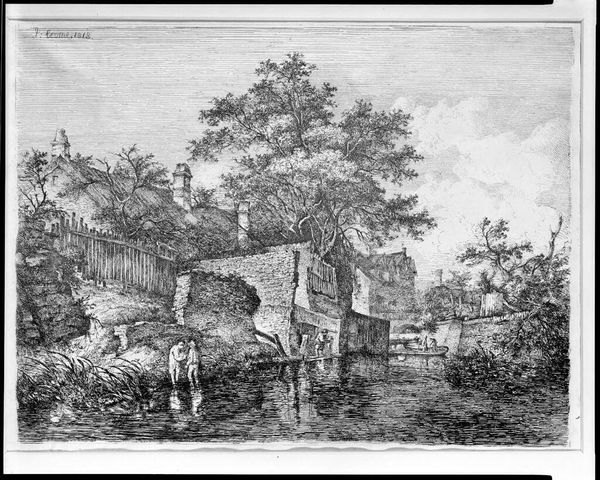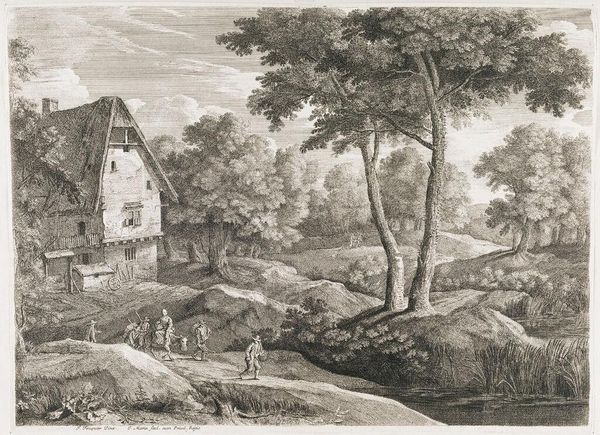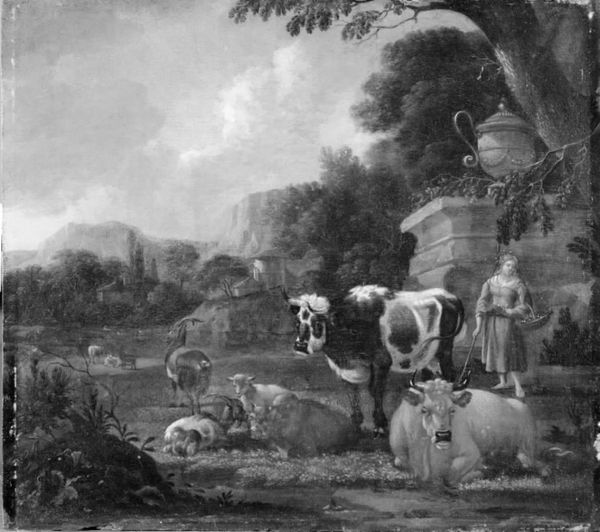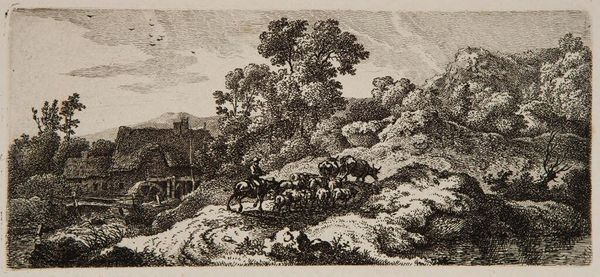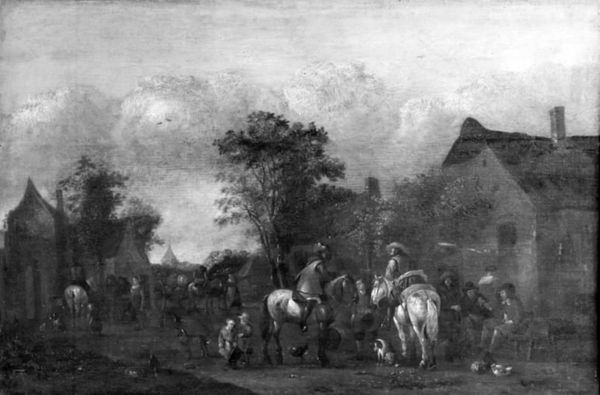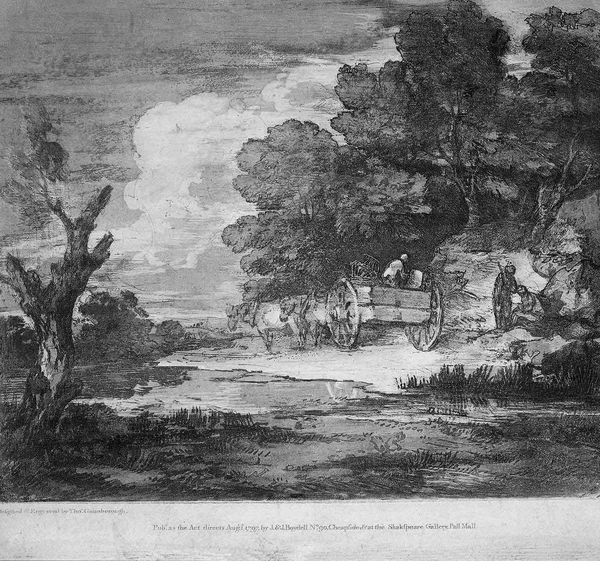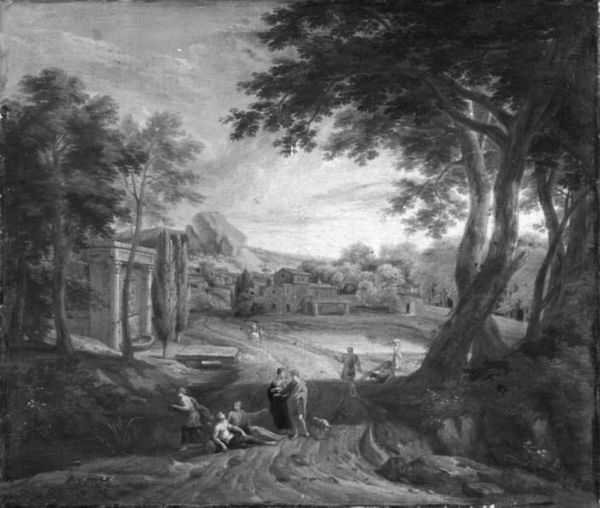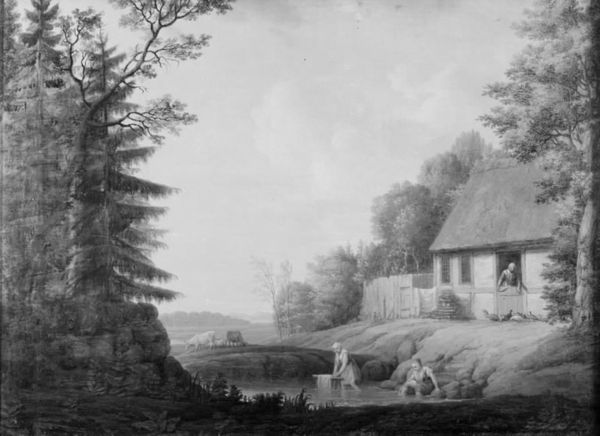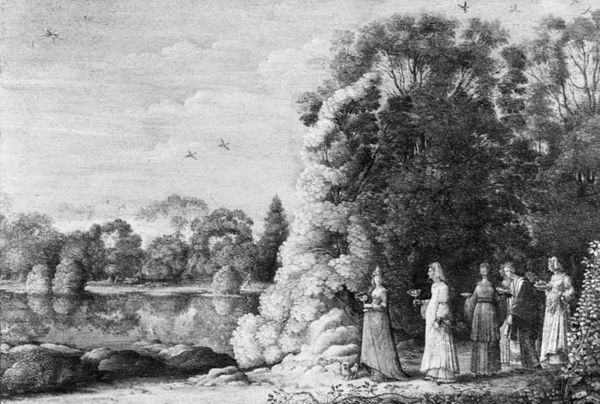
painting, oil-paint
#
medieval
#
baroque
#
painting
#
oil-paint
#
landscape
#
figuration
#
black and white
Dimensions: 13.5 cm (height) x 15.6 cm (width) (Netto)
This landscape was painted by Jan Brueghel the Elder sometime in the early 17th century. Dominating the foreground is a friar kneeling in prayer next to a skull and crucifix, symbols that were meant to remind us of our mortality and Christ's sacrifice. The skull, a symbol of death, finds its origins in vanitas paintings. The crucifix, of course, is an emblem of Christian faith. These symbols, though simple, are powerful. They echo throughout art history in countless forms. In ancient Roman art, we see similar memento mori, reminders of death, urging us to seize the day. Over time, the skull has become something more. Beyond its initial religious interpretation, it has become a symbol of human consciousness of our inevitable end. Such symbols tap into our collective unconscious. They evoke an emotional response, a contemplation of our existence and how it will end. Brueghel’s painting is more than just a depiction of nature. It captures the eternal human drama between life and death, faith and doubt, played out across the canvas. This is a cyclical procession, an evolution of symbols.
Comments
statensmuseumforkunst over 1 year ago
⋮
This small copperplate of a monk praying in front of a grotto has a small stamp on the back. It is the signature of the coppersmith comprised of the initials IM crowned by the number 4, with two St Andrew’s crosses below. The coppersmith was Jan Michielsens of Antwerp. His name is first mentioned in 1660, and he died in 1691. This means the painting could not, as previously thought, have been painted by Jan Brueghel the Elder (1568-1625). The identity of the artist remains unknown. As early as the late 1500s the coppersmiths of Antwerp ruled that the back of copperplates used by artists should be stamped with the monogram of the coppersmith. This system was introduced to control the quality of the copper as well paintings produced in the city. This is a tradition continued today, for example in the hallmarks of goldsmiths and silversmiths.
Join the conversation
Join millions of artists and users on Artera today and experience the ultimate creative platform.

